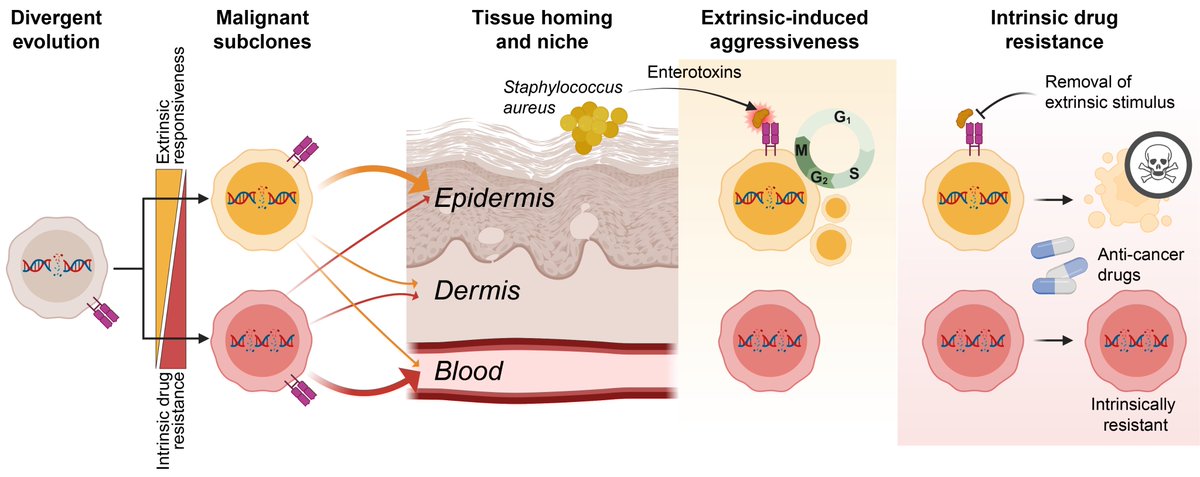
Terkild Brink Buus
@TerkildB
Followers
276
Following
3K
Media
54
Statuses
240
Assistant Professor intrigued by skin immunology and single-cell analyses at @skinUCPH.
Copenhagen
Joined June 2019
Can a cancer exploit its environment and still resist treatment?.Yes, through co-existing malignant subclones!. Let me walk you through our latest study on how divergent evolution drives aggressiveness, and drug resistance of T cell cancer. 1/🧵.
2
9
19
Finally, we would also like to thank N. Borcherding (@theHumanBorch), M. Khodadoust, A. Herrera and A. Cheng for making their data public and their gracious assistance in the annotation and elaboration of their respective single-cell RNA sequencing data sets.
1
0
0
And of course, this is the product of our fantastic community and facilities at @skinucph @UCPH_health @UCPH_Research!. #CancerResearch #Oncology #TCellLymphoma #CTCL #Hematology #TumorHeterogeneity #CancerBiology #DrugResistance #scRNAseq #CancerEvolution.
1
0
1
We greatly appreciate the constructive and professional feedback and suggestions from our reviewers and our editor @ElizSMcKenna at @CD_AACR!. We also thank @LEOFondet and the Danish Cancer Society @cancer_dk for funding the project!
1
0
1
🎧 Prefer audio? We’ve generated two AI-narrated summaries of the study:. – A brief summary (~15 min) – A more in-depth version (~45 min) Great for listening on the go while diving into the details. 10/.
drive.google.com
1
0
0
RT @ElizSMcKenna: Now online in @CD_AACR: Divergent Evolution of Malignant Subclones Maintains a Balance Between Induced Aggressiveness and….
0
12
0
RT @theJIDJournal: "Breaking the Vicious Cycle of Staphylococcal aureus Skin Colonization and Progression of Cutaneous T-Cell Lymphoma," a….
jidonline.org
We read with interest the report of Zeng et al (2024) that provides insight into the mechanism(s) whereby skin colonization by Staphylococcal aureus plays a key role in progression of cutaneous...
0
2
0
RT @skinucph: New @BloodJournal study by @ChellaKrishnaV and @TerkildB from Niels Ødum’s group @skinucph show bacterial infections can make….
0
3
0









